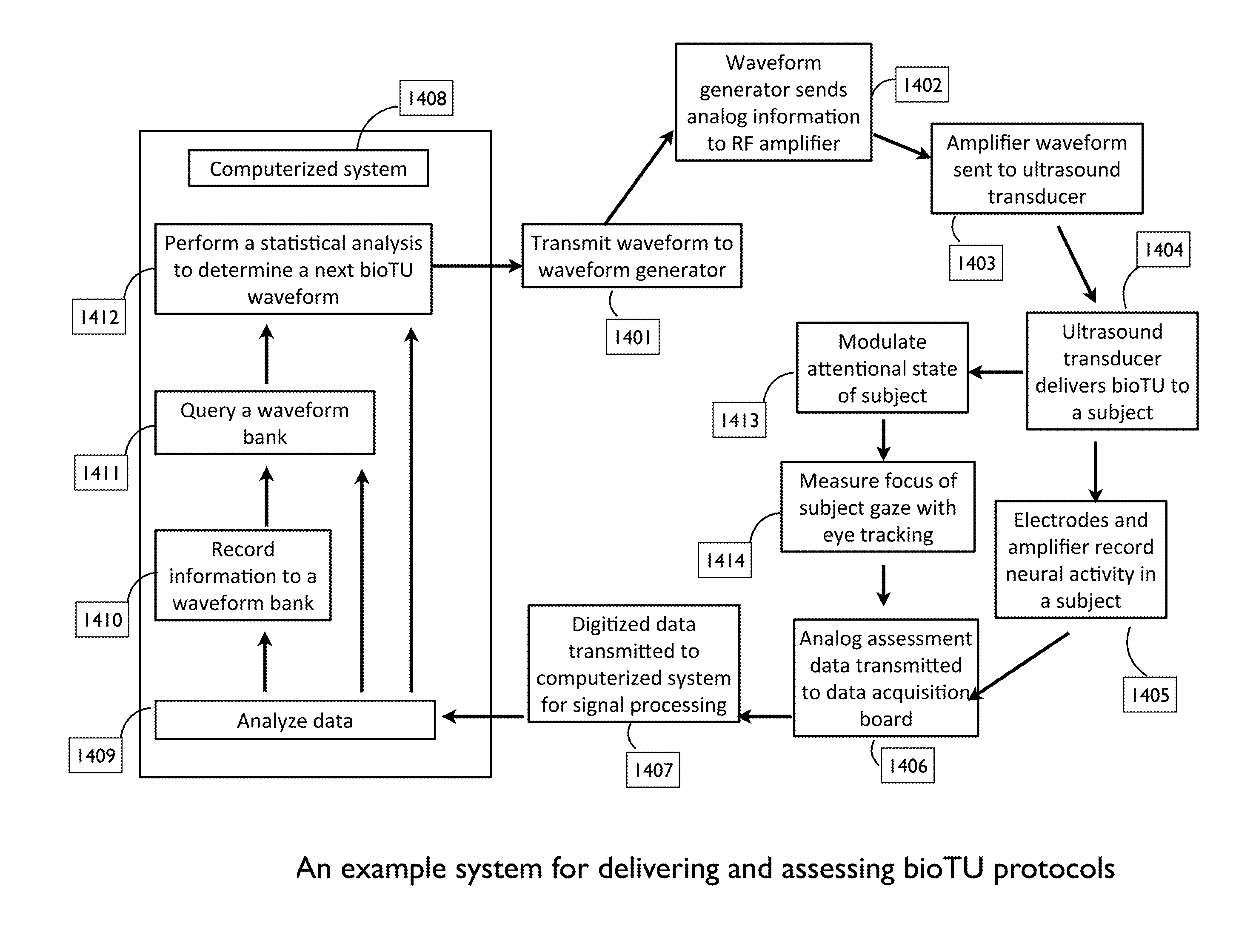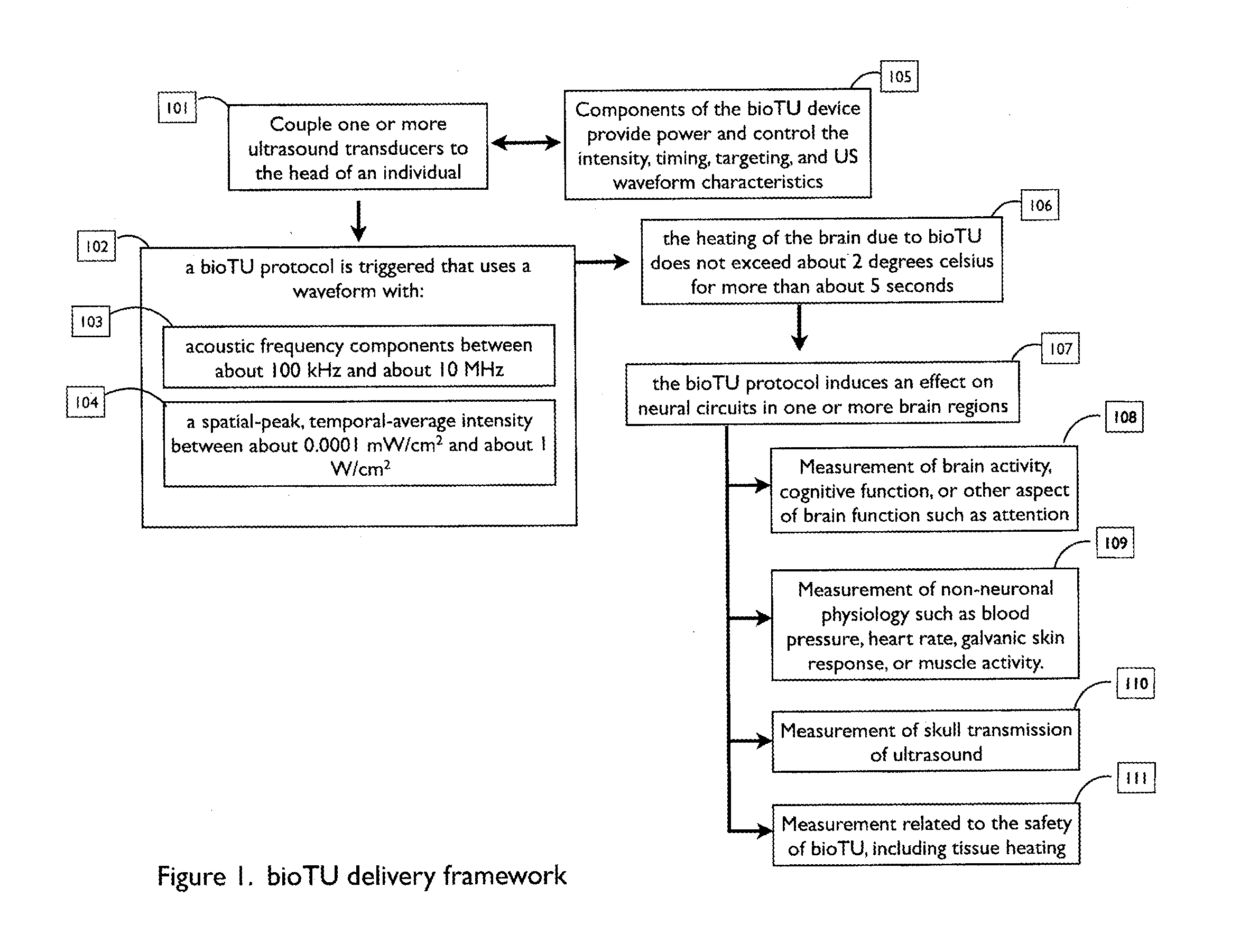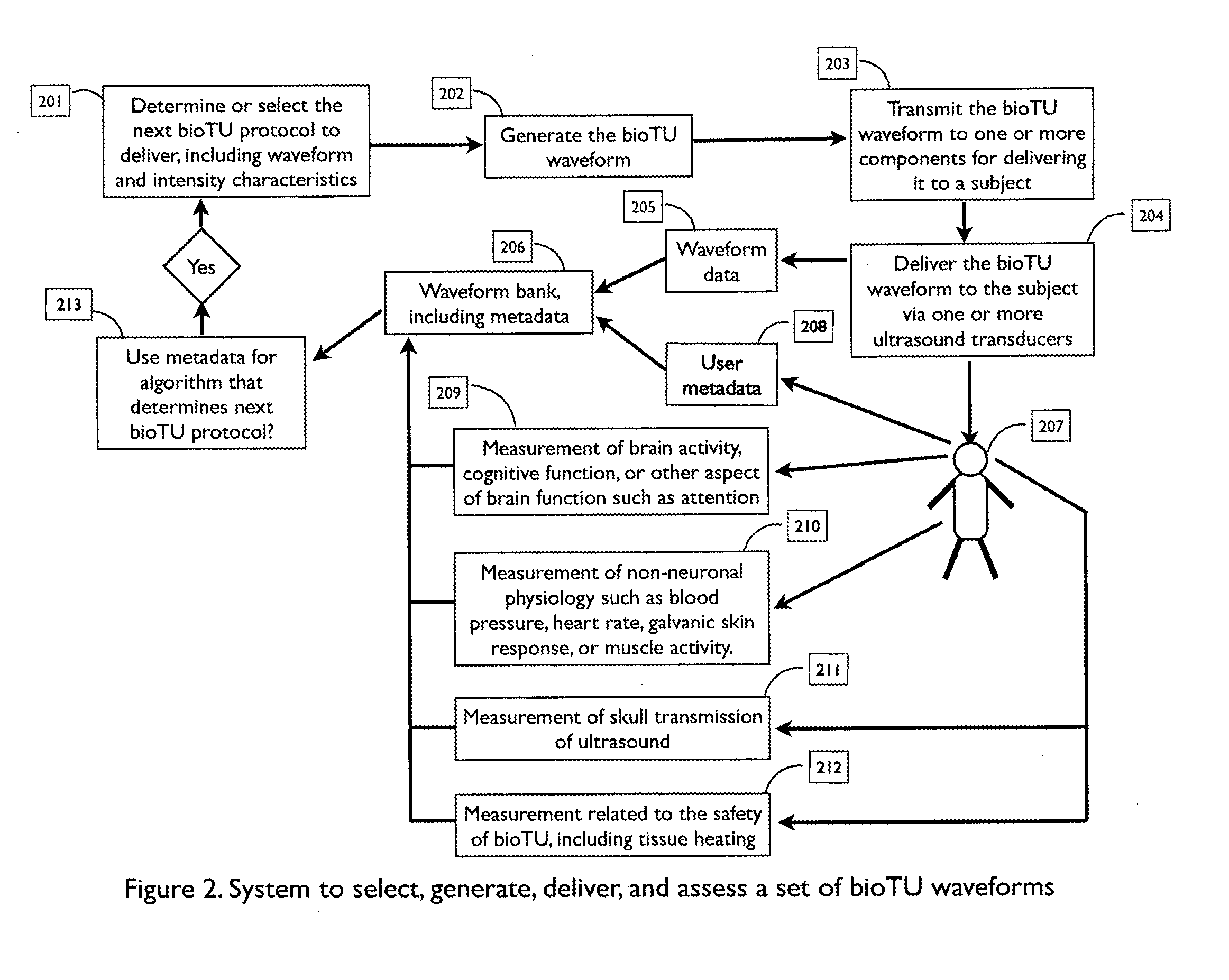Optimization of ultrasound waveform characteristics for transcranial ultrasound neuromodulation
- Summary
- Abstract
- Description
- Claims
- Application Information
AI Technical Summary
Benefits of technology
Problems solved by technology
Method used
Image
Examples
Embodiment Construction
[0034]According to an embodiment of the present invention, the methods and systems described herein are related to generating ultrasound waveforms of bioTU protocols. In an embodiment of the invention, one or more components of the invention are used to evaluate the efficacy of a bioTU waveform delivered to a subject by measuring one or more physiological effects, one or more cognitive effects, safety, skull transmission, or other measurements that relate to the safety or efficacy of a bioTU protocol. In some embodiments of the invention, the selection of bioTU protocols is improved over time by recording the resulting neuromodulation—if any—from previous studies, experiments, use cases, and bioTU waveform searches in a relational database. In some embodiments of the invention, bioTU waveforms and bioTU waveform components are also stored in the relational database (also referred to herein as a ‘waveform bank’).
[0035]bioTU is a beneficial new technique for modulating brain circuit a...
PUM
 Login to View More
Login to View More Abstract
Description
Claims
Application Information
 Login to View More
Login to View More - R&D
- Intellectual Property
- Life Sciences
- Materials
- Tech Scout
- Unparalleled Data Quality
- Higher Quality Content
- 60% Fewer Hallucinations
Browse by: Latest US Patents, China's latest patents, Technical Efficacy Thesaurus, Application Domain, Technology Topic, Popular Technical Reports.
© 2025 PatSnap. All rights reserved.Legal|Privacy policy|Modern Slavery Act Transparency Statement|Sitemap|About US| Contact US: help@patsnap.com



